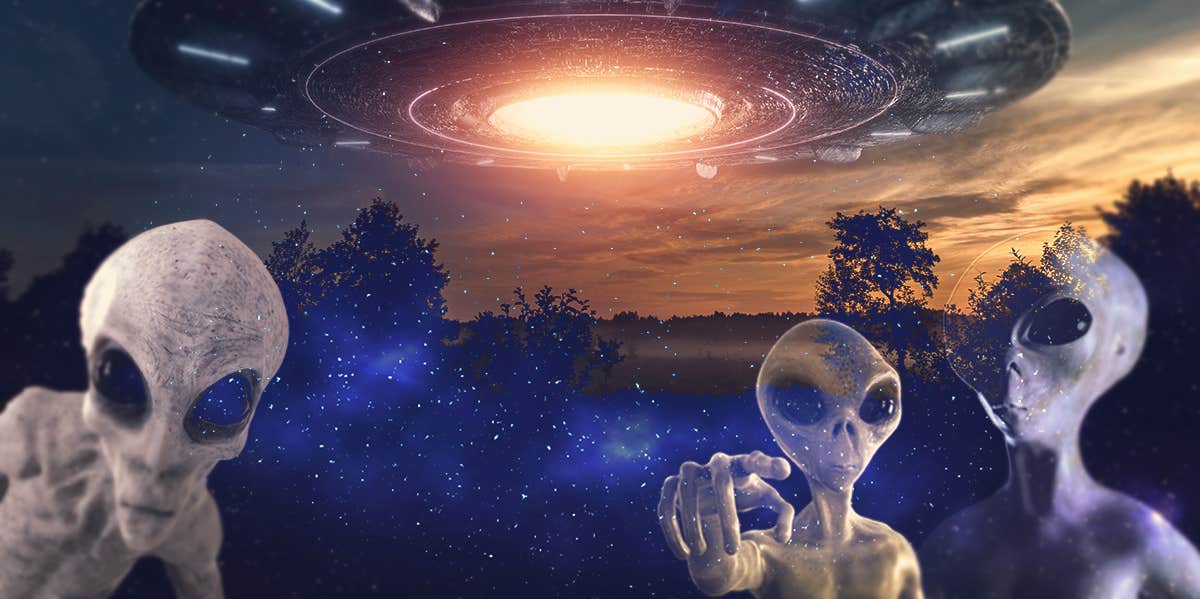Scientific Research May Prove That Humans Are Indigenous To Outer Space
It sounds logical.
 adike, SciePro, vchal, Marko Aliaksandr / Shutterstock
adike, SciePro, vchal, Marko Aliaksandr / Shutterstock There are many theories about how life began. There is the biblical story of Adam and Eve, Darwin’s five theories of evolution, common descent, gradualism, multiplication of species, and natural selection, to name a few.
But one hypothesis, first proposed by Greek philosopher Anaxagoras in 5th Century BCE, is not so much about the origin of life, but more related to how microscopic organisms move through outer space.
And that theory says that all life originated from other life forms in the universe. It is a theory known as panspermia.
What is panspermia?
The theory of panspermia is based on the notion that life forms exist throughout the entire universe. They can travel between planets via space dust, meteors, asteroids, comets, planetoids, and spacecraft.
Anaxagoras believed that organic molecules were capable of surviving in space during interplanetary space collisions and on various bodies of the solar system.
One TikTok shared a similar belief by the man who discovered DNA structure, Francis Crick.
According to the TikTok, Crick believed that "human DNA is far too complex to have evolved over the 4.5 billion-year history of earth," and thought DNA may have been seeded from another star system.
The panspermia theory also claims that there are different types of mechanisms, both interplanetary and interstellar, including pseudo-panspermia, lithopanspermia, and radiopanspermia.
Pseudo-panspermia is the theory that many of the building blocks of life, including those of life on earth, originated in space and were eventually distributed to planets where life as we know it emerged via abiogenesis.
This theory does point to how the existence of humans began.
Lithopanspermia is the belief that extremophile-type life might exist in the debris that results from crashes between planets, asteroids, and comets.
Radiopanspermia is the premise that organisms make their way through space by way of pressure from stars. Ultraviolet and x-ray radiation and the space vacuum fail to destroy these microscopic organisms; instead, they go on to grow in suitable planetary environments.
Is panspermia actually possible?
The search for extraterrestrial life forms and evidence suggesting that any organisms can survive the harsh environment in space had yielded numerous studies.
An International Space Station study found that organisms can survive outer space travel.
From 2008 to 2016, EXPOSE, a facility mounted outside of the International Space Station (ISS), subjected samples to the Mars-type conditions and some, exposed for periods of time up to 1.5 years, were still viable.
A quarter of the tobacco seeds used in the experiment were still capable of life and were grown as plants when they returned to earth. This was the first time data had shown that there was a possibility that organisms could survive travel through outer space.
NASA determined that spores can live in the space environment — but the study is flawed.
Another study on board the NASA Long Duration Exposure Facility (LDEF) found that spores could survive that space environment for up to six years when given basic protection.
In 1969, the Apollo 12 crew returned to Earth with a piece of the Surveyor 3 Lunar Lander and found that ts contained Earth bacterium that had apparently survived unprotected in space for over two years.
It was thought that 50-100 microbes survived the launch, the harsh vacuum of space, three years of exposure to radiation from the moon, a minus-253-degree Celsius lunar deep-freeze, a lack of nutrients, water, and an energy source.
That theory was later dispelled when the etiquette of the Survivor 3’s clean room was scrutinized. It was determined that the microbes were simply contaminated upon returning to Earth and not unlikely survivors of space travel.
The Indian Space Research Organization found evidence of panspermia in the upper atmosphere, but later determined that it could be hurricane-related.
Yet another study by the Indian Space Research Organization (ISRO) launched balloon flights between 2001 and 2006, resulting in the belief that interplanetary panspermia existed in air samples taken at 41 kilometers. It was that air from the lower atmosphere could not travel that high.
In 2010, that hypothesis was dispelled when the atmosphere was sampled before and after hurricanes, and those tests found that such conditions could actually push bacteria from the Earth to the upper atmosphere.
The scientific community is still unsure of whether or not panspermia exists.
Professor Chandra Wickramasinghe, Director of the Buckingham Center for Astrobiology at the University of Buckingham, believes that although there were early flaws and inadequacies in the research, the theories have since been verified.
But for Ian Crawford, Professor of Planetary Science and Astrobiology at London’s Birkbeck University, there are way too many holes in the theory. He surmises that the only way to truly settle the existence of panspermia is to explore other habitable environments.
NyRee Ausler is a writer from Seattle, Washington, and author of seven books. She covers lifestyle and entertainment and news, as well as navigating the workplace and social issues.

